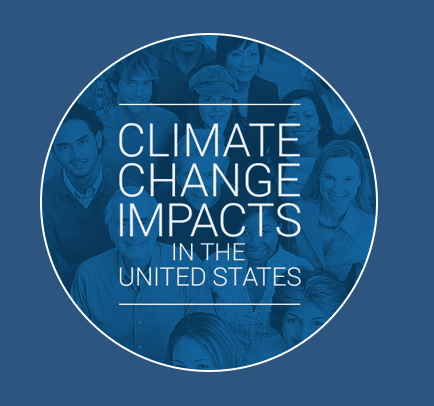
Global climate is changing and this change is apparent across a wide range of observations. Moreover, the global warming of the past 50 years is primarily due to human activities.
The American leading scientists and experts warn about the effects of climate change while releasing the report “Climate change impacts in the United States”. The report accounts for the risks and impacts of climate change while envisioning possible solutions and strategies to cope with climate change.
“Climate change, once considered an issue for a distant future, has moved firmly into the present”, the report says. “Corn producers in Iowa, oyster growers in Washington State, and maple syrup producers in Vermont are all observing climate-related changes that are outside of recent experience. So, too, are coastal planners in Florida, water managers in the arid Southwest, city dwellers from Phoenix to New York, and Native Peoples on tribal lands from Louisiana to Alaska”.
Some changes are dramatic. “Residents of some coastal cities”, the report states, “see their streets flood more regularly during storms and high tides. Inland cities near large rivers also experience more flooding, especially in the Midwest and Northeast. Hotter and drier weather and earlier snow melt mean that wildfires in the West start earlier in the spring, last later into the fall, and burn more acreage. In Arctic Alaska, the summer sea ice that once protected the coasts has receded, and autumn storms now cause more erosion, threatening many communities with relocation”.
The evidence of human-induced climate change continues to strengthen and that impacts are increasing across the country.
The report of the National Climate Assessment provides an in-depth look at climate change impacts on the U.S.
Scientists who worked on the report claimed its main messsage is that climate change is already upsetting the lives of Americans – now and in real-time – and is doing so much more strongly than scientists had expected.
Climate change is already showing in the form of extreme weather, sea-level rise, increasing in temperatures and in the frequency and intensity of extreme precipitation events, the thawing of Arctic sea ice, a shift and lengthening in growing seasons, the report said. More in detail, results are summarized in twelve key messages underlining observed and future climate change, recent temperature trends, lengthening frost-free season, heavy downpours increasing and precipitation change, changes in hurricanes and storms, sea level rise and ocean acidification, melting ice and extreme weather events. Moreover, the report considers different sectors, such as water, energy, agriculture, transportation, forests, ecosystems, human health, indigenous people, rural communities etc and U.S. regions (Northeast, Southeast, Midwest, Great Plains, Southwest, Northwest, Alaska, Hawaii and Pacific Islands, Oceans, Coasts) while suggesting response strategies such as mitigation and adaptation measures.
The National Climate Assessment summarizes the impacts of climate change on the United States, now and in the future. A team of more than 300 experts guided by a 60-member Federal Advisory Committee produced the report, which was extensively reviewed by the public and experts, including federal agencies and a panel of the National Academy of Sciences.


